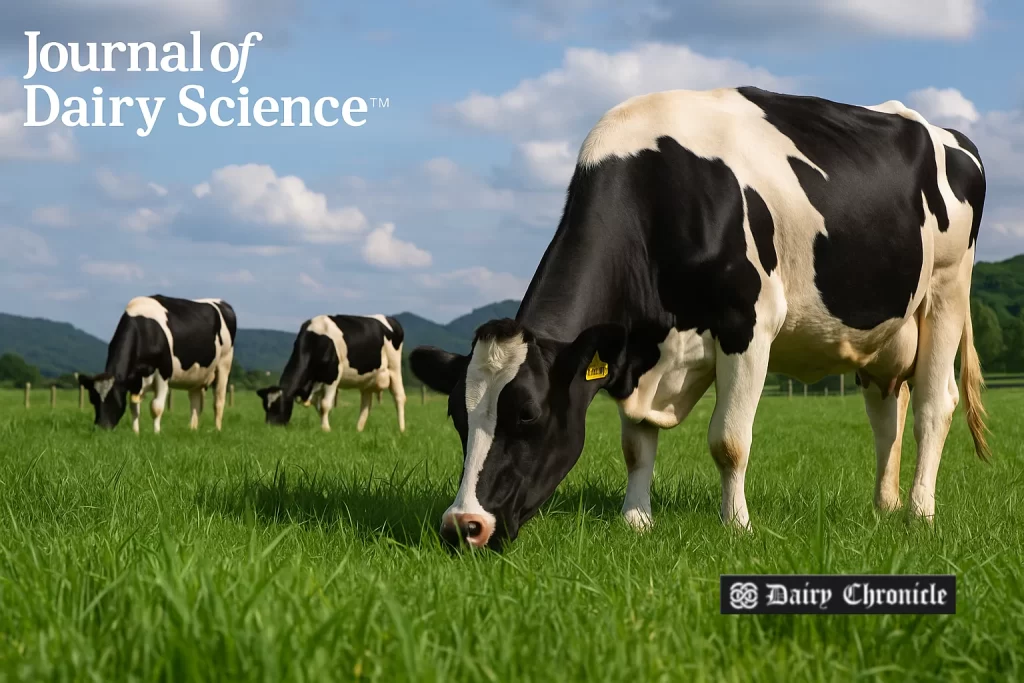A study published in the Journal of Dairy Science reveals that incorporating grass-based feeding strategies, even with reduced grazing, enhances dairy sustainability. Conducted over 19 weeks with 40 cows, the research compared traditional grass-based systems with corn-based diets under forage-shortage conditions. The findings highlight that reduced grazed grass in traditional systems maintains milk yield and feed efficiency while also reducing methane emissions. Moreover, cheese quality improved with higher fresh herbage intake, due to increased beneficial bacteria and protein breakdown. These insights hold significant value for Indian dairy sectors looking to strengthen sustainability and quality in changing climatic conditions.
A new study published by the Journal of Dairy Science, a peer-reviewed journal from the American Dairy Science Association (ADSA), has revealed compelling evidence that grass-based feeding strategies can significantly enhance the sustainability of dairy production, especially under conditions of forage shortage.
The research, conducted over a 19-week period, involved 40 dairy cows grouped into four balanced cohorts. It compared two key systems: a traditional semi-mountainous grass-based feeding approach and a corn-based system with part-time grazing. The study measured milk production, feed efficiency, methane emissions, and cheese quality.
Results showed that in grass-based systems, reducing the availability of grazed grass maintained milk output and improved feed efficiency. In contrast, removing fresh herbage from corn-based systems impaired feed efficiency, though milk production remained stable. Notably, grass-based systems showed significantly lower methane emission intensity.
Cheese produced from cows fed more grazed grass was found to be softer, more yellow, and had richer, more pronounced flavors. This was attributed to elevated levels of αS1-casein and β-casein breakdown and a higher presence of beneficial lactic acid bacteria, key factors in enhancing cheese quality.
The findings suggest that for corn-based feeding systems, retaining some proportion of fresh herbage is essential to preserve cheese quality. Meanwhile, indoor supplementation in grass-based systems can effectively maintain animal performance without compromising product characteristics.
These findings are especially relevant for dairy producers in India, where rising temperatures and erratic monsoons increasingly affect forage availability. By adopting adaptive, grass-based feeding practices, Indian dairy farmers could not only sustain milk yields but also lower environmental impact and enhance product quality, aligning with global trends in sustainable agriculture.



